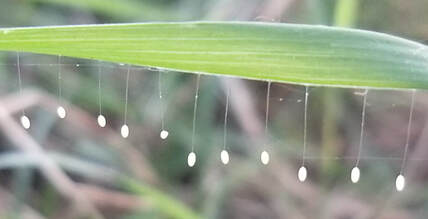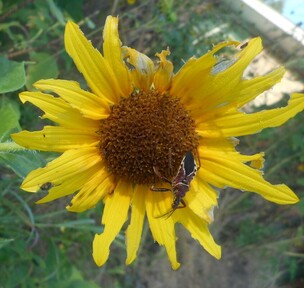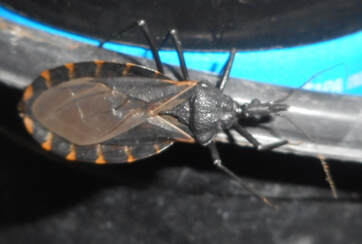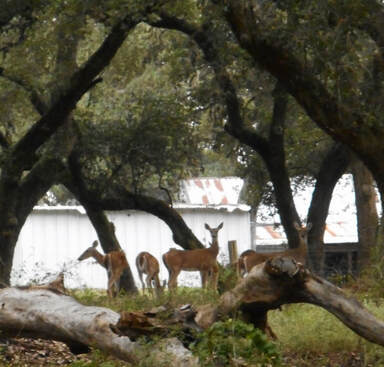To help find the hidden guest, click on the picture to enlarge.
|
Answers can be found at the bottom of this page.
|
|
|
160. Green Lacewing:
a) is an extremely beneficial insect b) eggs are laid on a stalk c) larvae are known as “aphidlions” d) all of the above e) a and c only |
|
161. Nessus Sphinx Moth:
a) is a diurnal (daytime) insect b) feeds on flower foliage c) has silver coloration on forewings d) is considered a large sphinx moth e) is a rare moth |
|
162. Owlflies:
a) feed on small arthropods b) are crepuscular (adult flies during twilight hours) insects c) rest by hiding on a branch d) tail resembles a twig when raised e) all of the above |
|
163. Red-banded Hairstreak Butterfly:
a) is a large butterfly b) flies really fast c) is not found in Texas d) has dull wing coloration e) all except d |
|
164. Great Purple Hairstreak Butterfly:
a) eggs are laid in mistletoe b) is also known as a “Great Blue Hairstreak” c) male is brilliant iridescent blue d) all of the above e) b and c only |
|
169. Mottled Sand Grasshopper:
a) is considered a beneficial insect b) is easy to find when resting in gravel or sand c) spits tobacco juice-like stomach contents when handled d) b and c only e) a and c only |
|
170. Sad Underwing Moth:
a) is found throughout the U.S. and Canada b) camouflages itself on Oak, Hickory and Pecan tree bark c) has a red line down its forewings d) a and b only e) a and c only |
|
171. Yellow-bellied Bee Assassin Bugs:
a) are rare in the southwestern region of the U.S. b) will not bite humans c) are known to capture bees d) a and c only e) b and c only |
|
175. White-tailed and Axis Deer:
a) can be garden and crop pest b) White-tailed deer raise their tail to signal danger c) Axis and Fallow deer have white spots on their body d) feed in grassy areas e) all of the above |
|
Answers:
|
159 e, 160 d, 161 a, 162 e, 163 b, 164 d, 165 a, 166 c, 167 d,
168 e, 169 c, 170 b, 171 c, 172 e, 173 b, 174 d, 175 e |

























